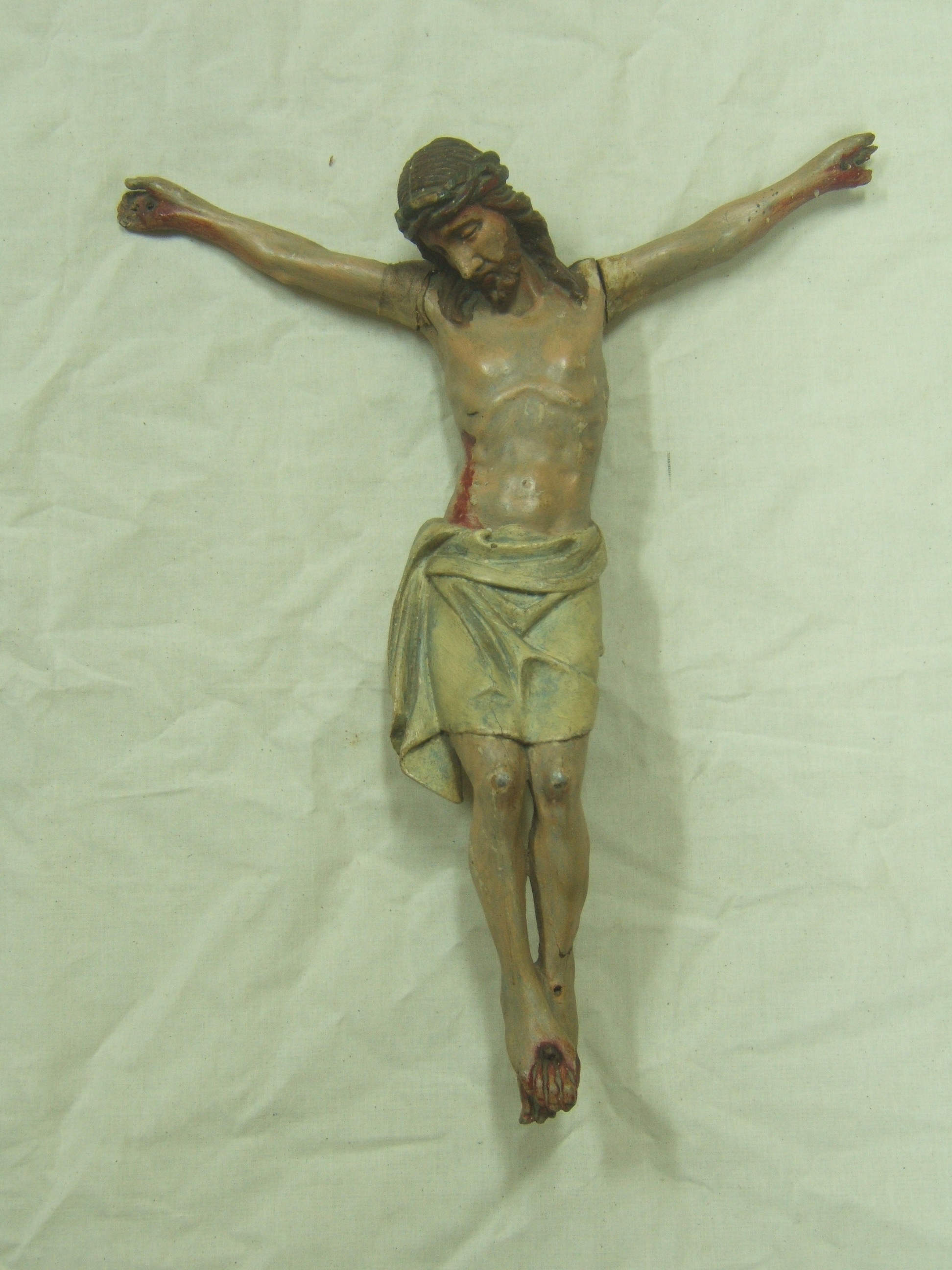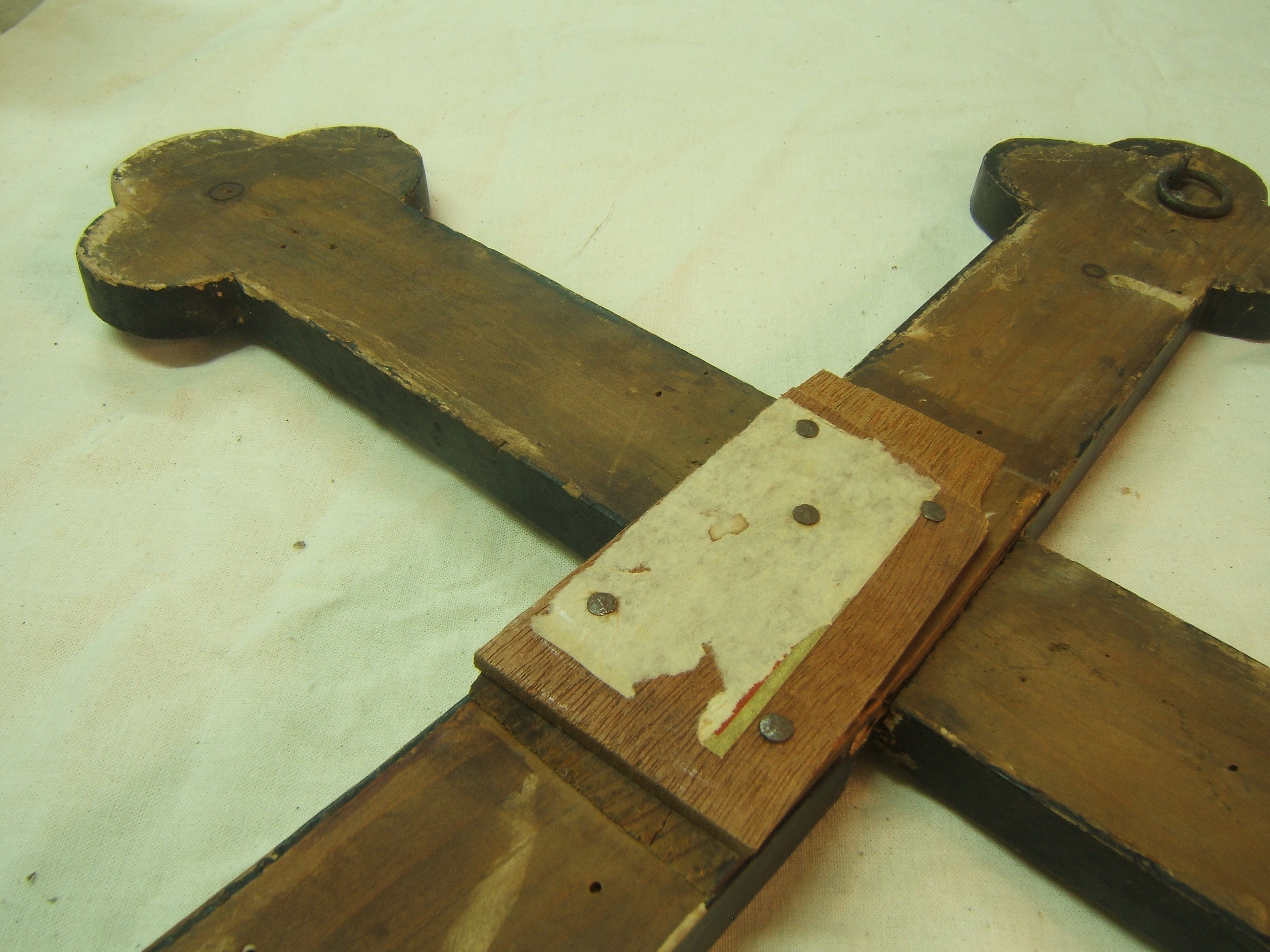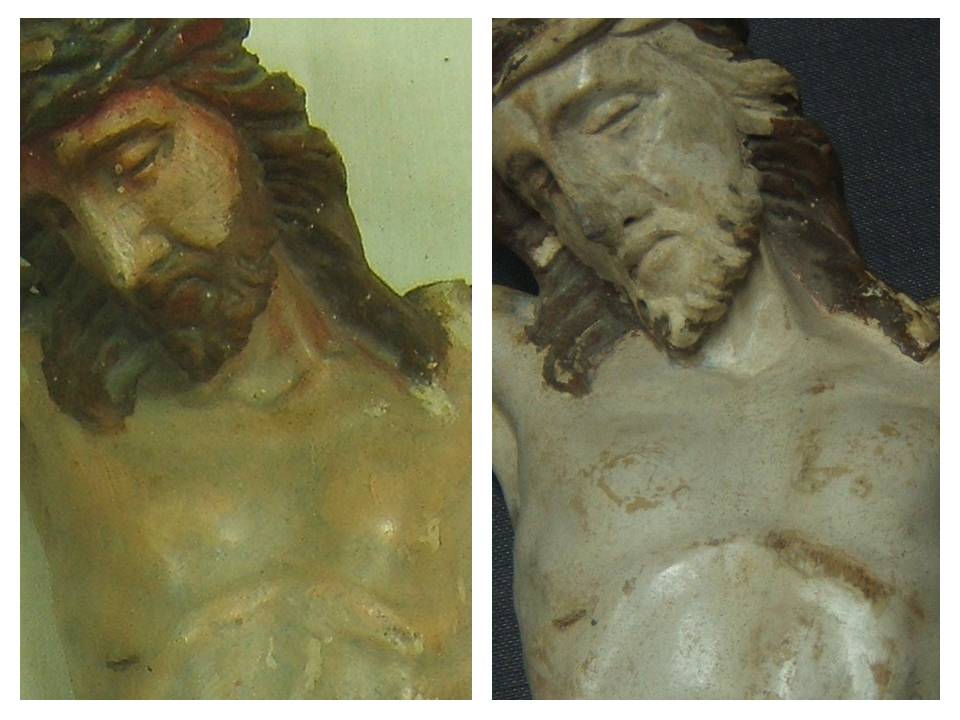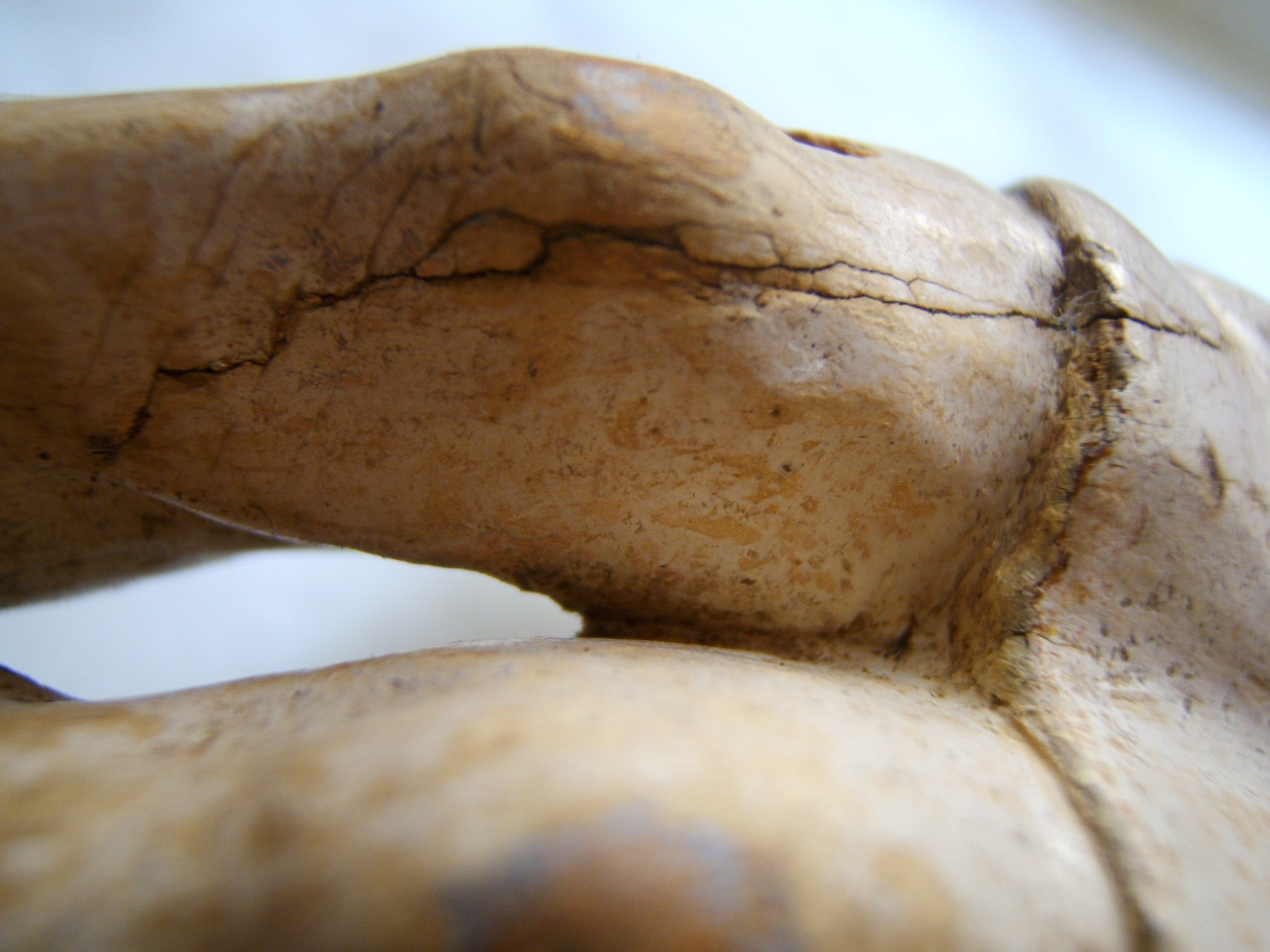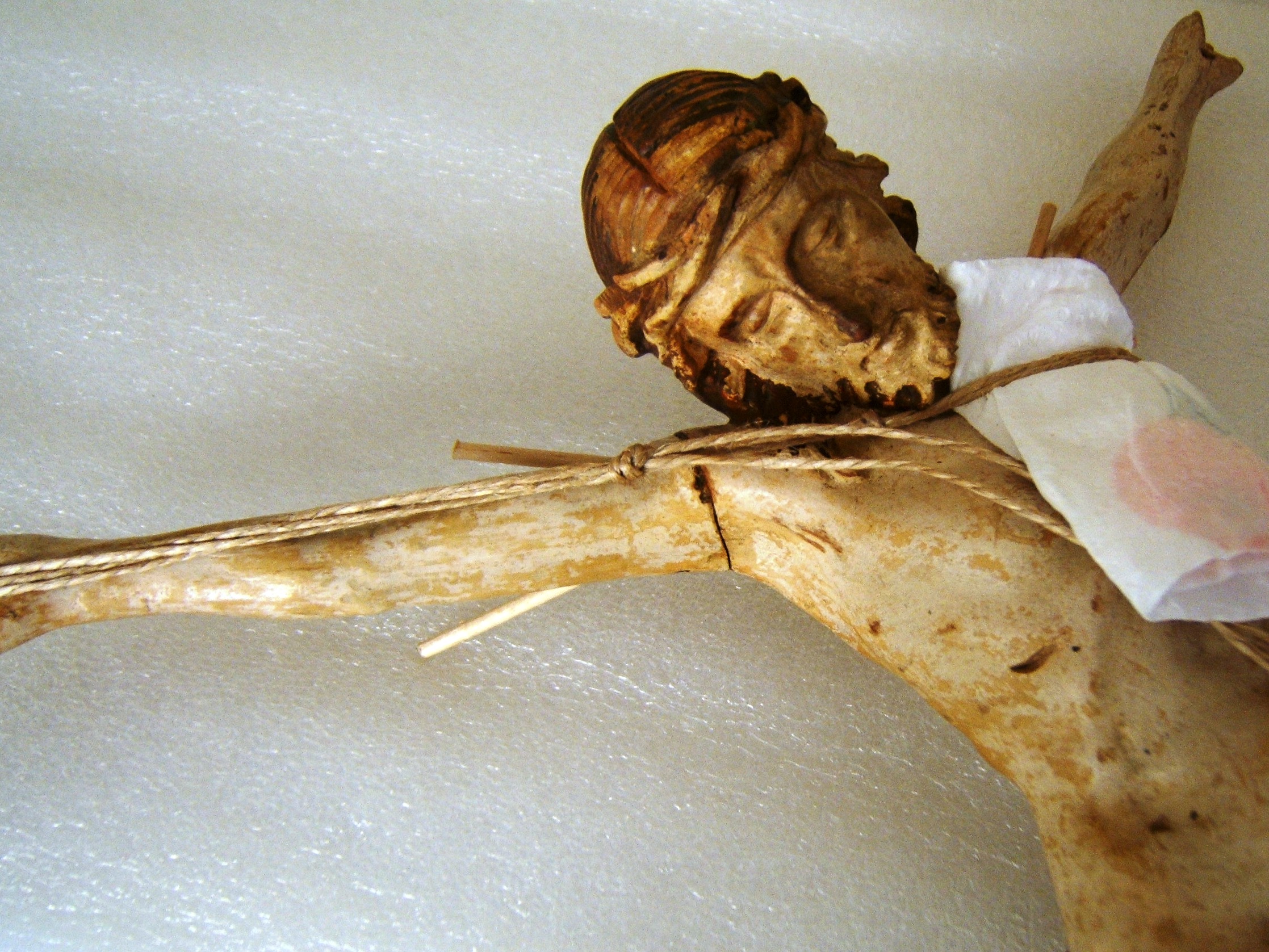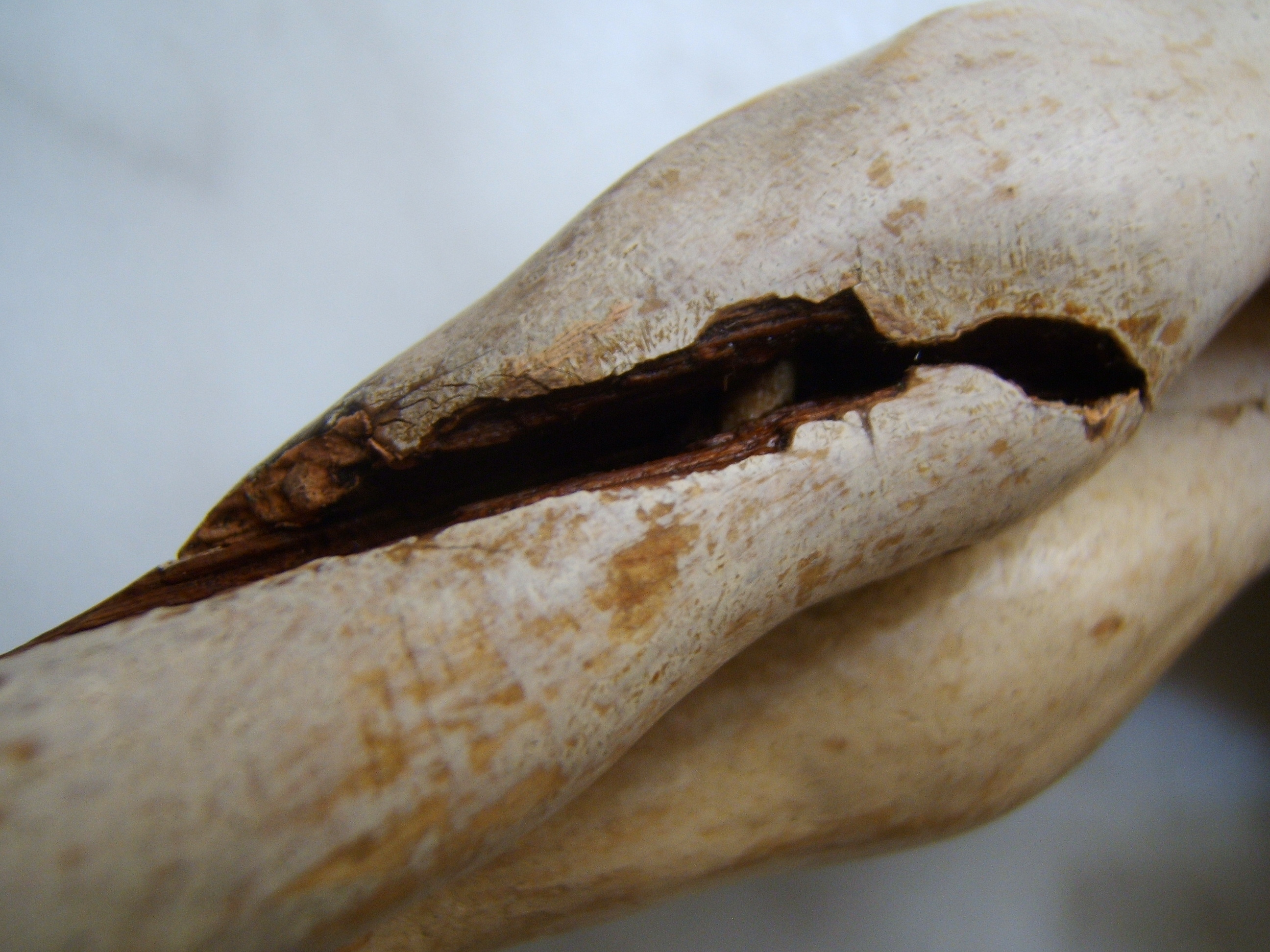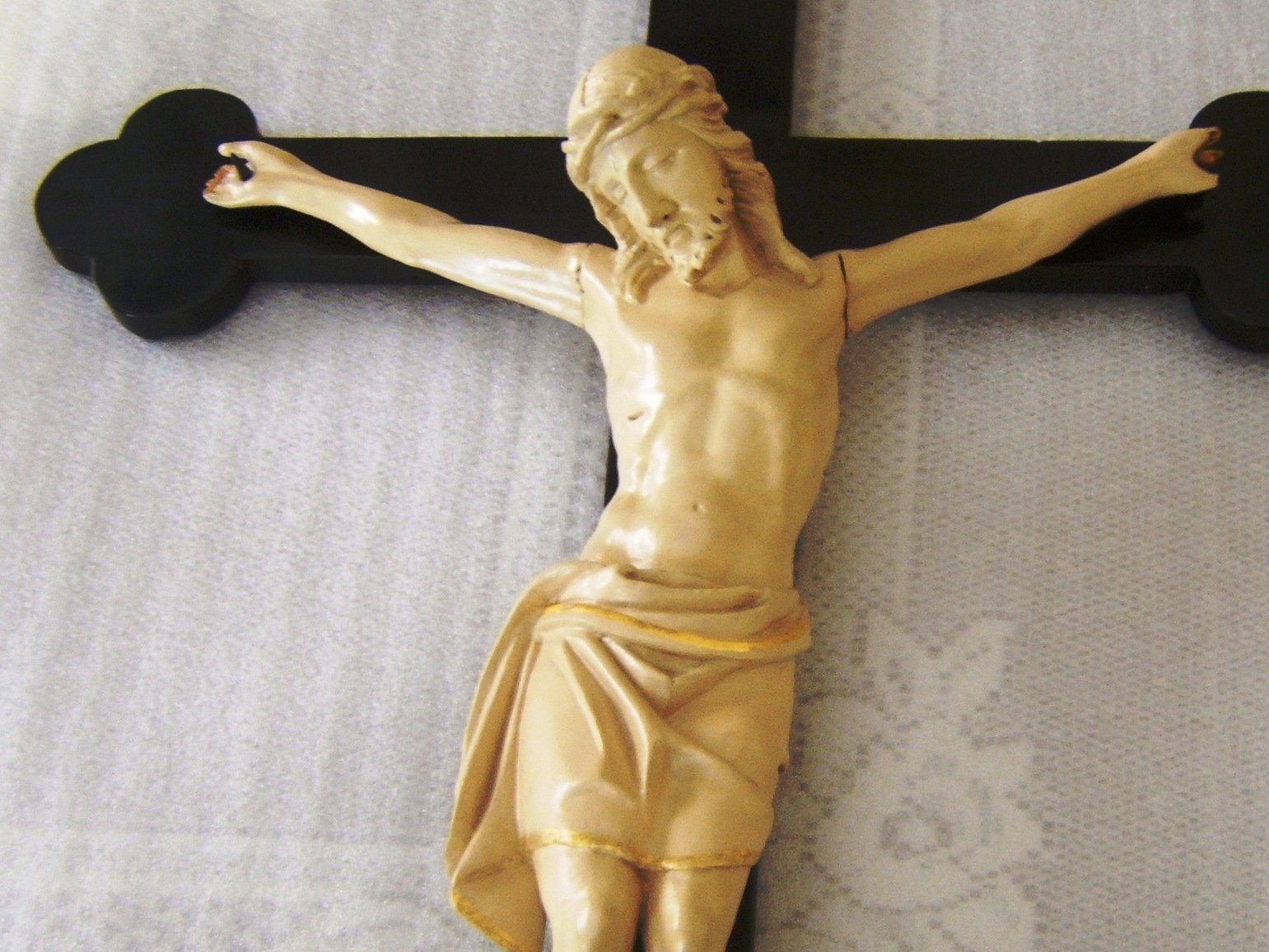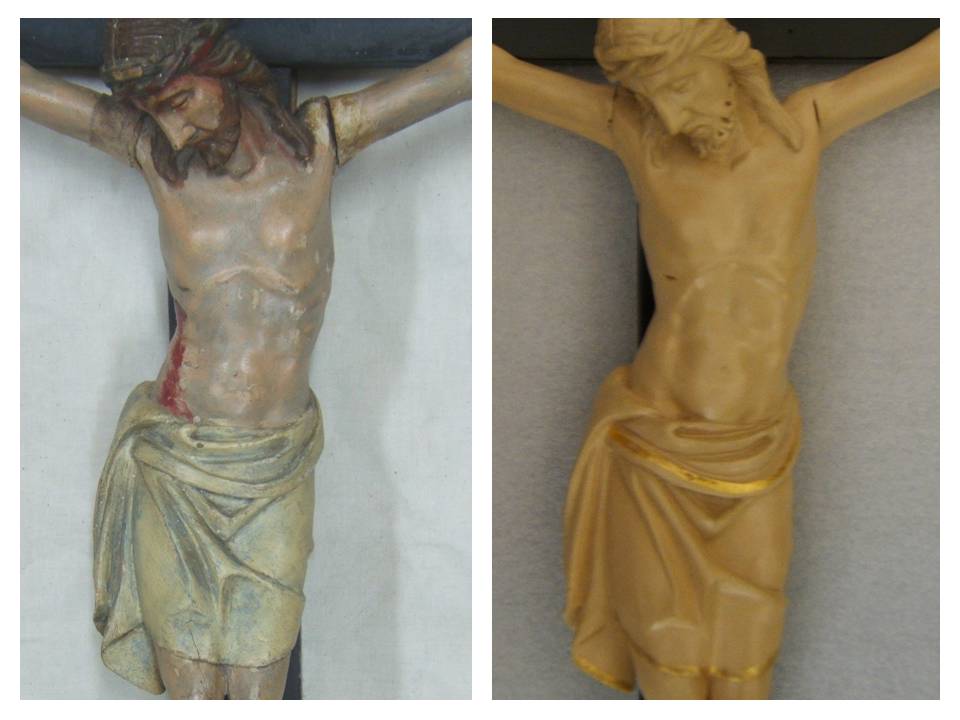The coarse finish was exclusively the result of former redecoration – this had altered dramatically and aesthetically
the idiom of its artistic content. It was evident that such valuable artefact had undergone a drastic redecoration. Its
original monochrome decorative layer in fact, resembles ivory in colour and texture, achieved through the use of
cheaper and commonly available materials like wood and pigments. Formerly the perizoma had its hem embroidered
in gold leaf. The overlaid finish was exclusively eliminated mechanically and under magnification, aided with surgical
scalpel blades and dental probes. The re-emerged complexion was further washed with an enzyme.
The carved figure had during the course of time suffered losses, namely its left hallux, and all its fingers save for its
right thumb. It was deemed opportune not to replace any of its lost fingers, nor its toe. However, a missing carved nail
which originally tied both feet to the cross was reproduced.
The connection of both arms to the trunk proved to be very weak and a separation between timber joints, on the
other hand, caused cracks and paint flake along the right leg. The structure showed evidence of biological attack – the
latter degradation brought about strength reduction and substantial loss to the infected area. Plywood reinforcement
which has been glued and nailed to the back of the cross was removed and the former half lap joint was re-
established.
As a preventive measure the sculpture was subject to disinfestation treatment through anoxia, avoiding hence any
kind of impregnation of the wood by liquid agents, fumigation, or any other physical methods.
Holes and cracks, on the other hand, were levelled with glue gesso. The reintegration of the various losses was
addressed with the utmost attention in as much as it was to influence the final appearance of the sculpture. Abraded
and in filled areas were veiled over using water-based colours. Gilding losses were re-integrated with gold leaf of the
same tone and carat.


